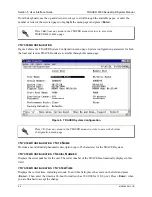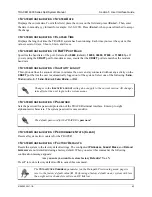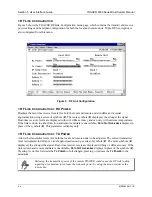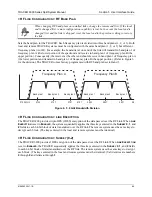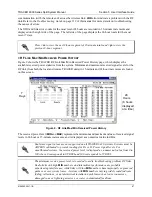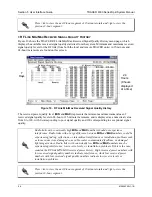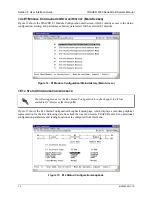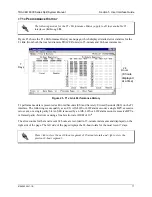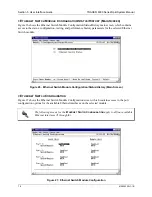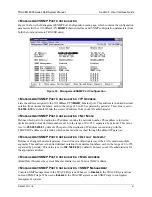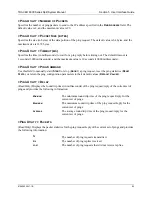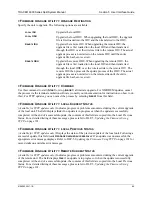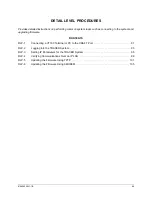
TRACER 6000 Series Split System Manual
Section 5 User Interface Guide
612806320L1-1B
75
>T1
X
S
TATUS
/C
ONFIGURATION
/L
OOPBACK
> T1
X
I
NTERFACE
A
LARMS
Displays any active alarms on the T1 link (reported from both the local and remote TRACER units). These
alarms include Red, Blue/AIS, Yellow, LOS, and bipolar violations (BPV). Table 2 briefly describes these
alarms. See Section 6,
Troubleshooting Guide
, on page 119, for more information on these alarms.
> T1
X
S
TATUS
/C
ONFIGURATION
/L
OOPBACK
> A
LARM
R
EPORTING
Determines whether the TRACER unit will report active alarms. If set to
D
ISABLED
, no alarms will be
displayed on this menu page. The
A
LARM
R
EPORTING
parameter is independently configured for the local
and remote TRACER units. When set to
D
ISABLED
, the TRACER does not report active alarms via SNMP
or the
CRAFT
port, and the status LEDs are off. By default, alarm reporting is set to
E
NABLED
.
>T1
X
S
TATUS
/C
ONFIGURATION
/L
OOPBACK
> T1
X
L
INE
B
UILD
O
UT
Configures the T1 for the appropriate line build out, based on the distance to the T1 equipment. By default,
the line build out for the TRACER is
0 dB/133
FT
.
> T1
X
S
TATUS
/C
ONFIGURATION
/L
OOPBACK
> S
IGNALING
Configures the framing format for the T1 link for both the local and remote TRACER units. The TRACER
transports T1 data across the link (as long as the T1 signal is properly timed). Configure the framing format
(using the
S
IGNALING
menu) to enable the TRACER to monitor incoming framing error events and indicate
problems with the attached metallic service. The TRACER supports both extended superframe (
ESF
) and
superframe (
D4
) framing formats. By default, the signaling method is set to
ESF
.
> T1
X
S
TATUS
/C
ONFIGURATION
/L
OOPBACK
> L
INE
C
ODE
Sets the line coding for the T1 link. The TRACER supports bipolar eight-zero substitution (
B8ZS)
and
alternate mark inversion (
AMI
) line coding. By default, the line code is set to
B8ZS
.
> T1
X
S
TATUS
/C
ONFIGURATION
/L
OOPBACK
> L
OOP
/N
ORMAL
S
TATE
Controls the loop status of the T1 link. Activates/deactivates loopback conditions for testing purposes.
> T1
X
S
TATUS
/C
ONFIGURATION
/L
OOPBACK
> L
OOP
/N
ORMAL
S
TATE
> N
ORMAL
Defines the T1 link as normal data transport mode; there are no active loopbacks.
Table 2. T1 Interface Alarms
RED
Activates when no T1 signal is present from the connected T1 equipment. LOS is
activated after receiving 192 consecutive zeros.
BLUE/AIS
(Alarm Indication Signal) Activates when an incoming remote alarm is received from a
connected T1 device. An AIS signal is an unframed all one signal that replaces the normal
traffic signal.
YEL
(Yellow Alarm) Activates when an incoming remote alarm is received from the T1 device
indicating that a failure has occurred in the received direction.
LOS
(Loss of Sync) Occurs when the TRACER system cannot synchronize to the incoming T1
data stream.
BPV
(Bipolar Violations) Activates when the incoming T1 stream presents BPVs. BPVs occur
when two one bits are received back-to-back with the same polarity.


